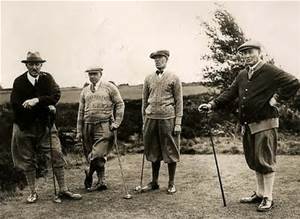An organization meeting was held to further discuss the proposed golf course on September 21, 1921 at the Androy Hotel. This meeting was the official first annual meeting of the Mesaba Country Club. Twenty five people attended and elected Dr. Blacklock as the first president. Also elected were the golf courses first board of directors, which included M.H. Barber, F.H. Holladay, L.H. Lerch, C.F. Corey and F.P. Botsford.
The golf courses membership was limited to 200 golfers and corporate stock was set at $200.
At the golf courses first board meeting held on October 11, 1921, Fred Holladay and Max Barber were elected vice-president and secretary treasurer respectively.
With a golf course organization formed, events began happening in rapid succession and the dream of building a golf course in Northern Minnesota was on it's way to reality. On November 11, 1921 the purchase of 80 acres of land from Brian O'Rourke was authorized on which the golf course would be built.
On March 15, 1922 authorization was forthcoming to select a golf course designer. In June of 1922 Reed Erickson and three partners were at work on the course and doing the remaining clearing that was required. On July 18th, the first lease was instituted with the Village of Hibbing for the 40 acres in the area where our holes number two and three are presently located. This land is described as NW 1/4 of NW 1/4, Section 31-57-20 and hereafter referred to as the village 40.














